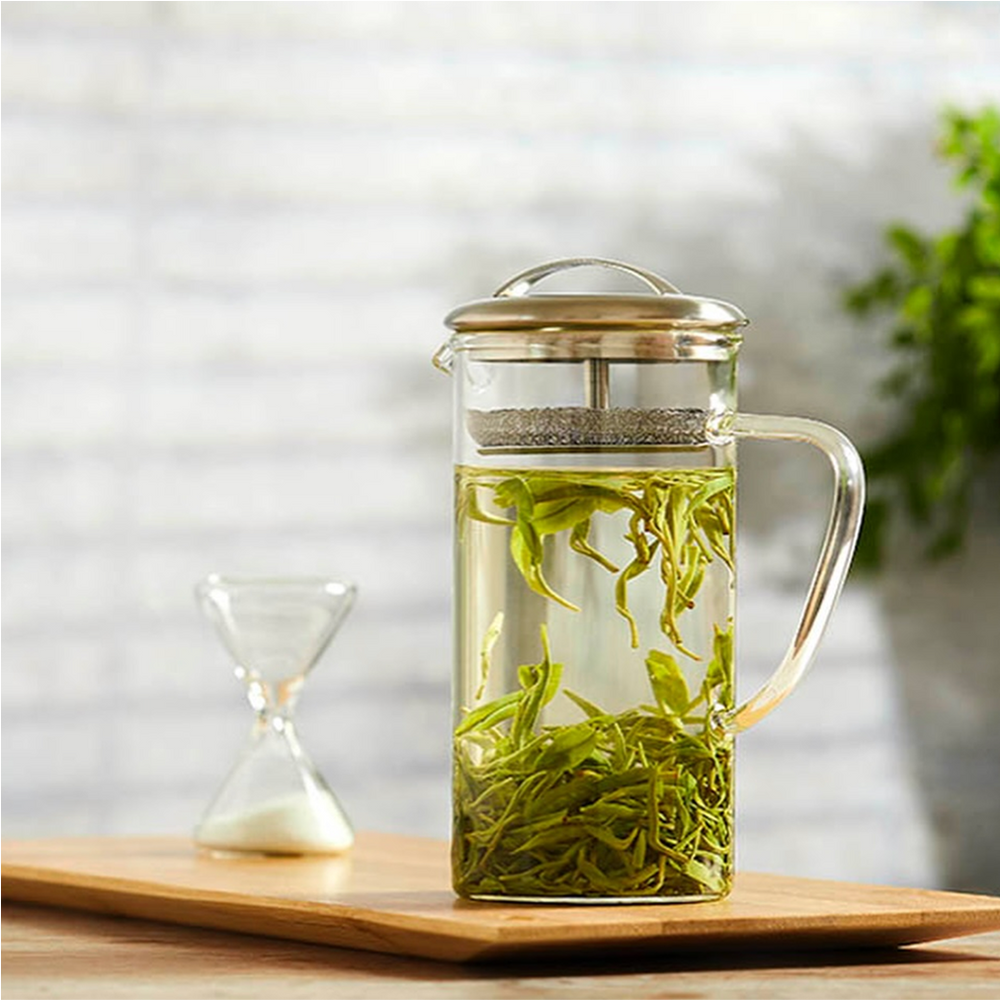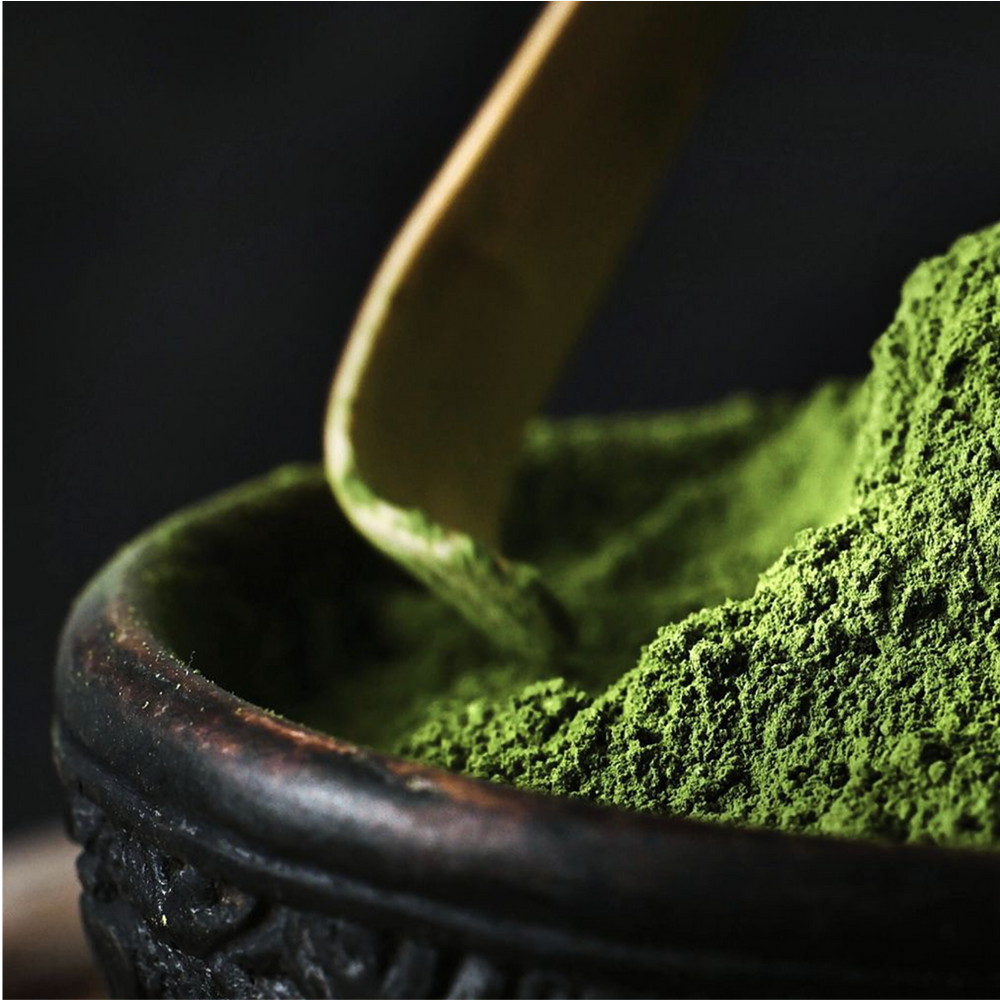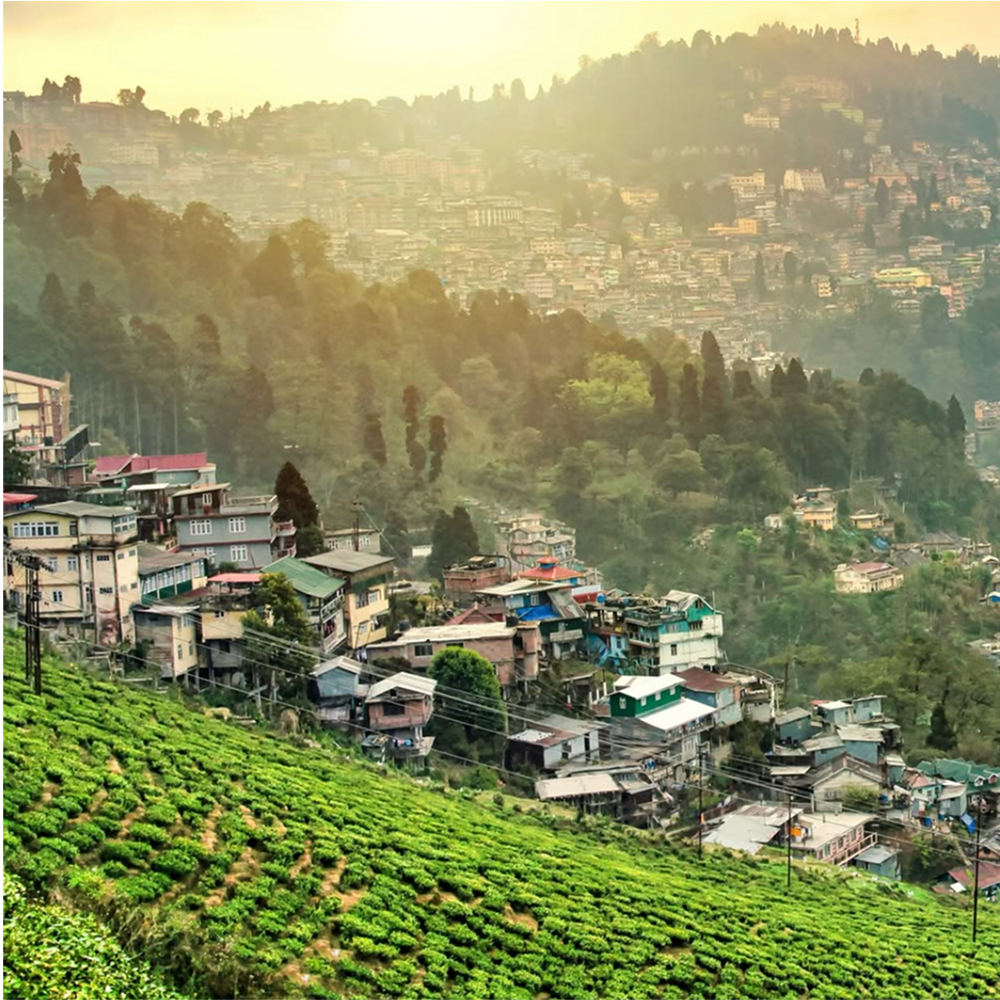It's jasmine season in Southern China, and the tea gardens of Guangxi are alive with the delicate fragrance of jasmine blossoms. For many of us at JING, jasmine tea was the gateway to discovering the rich world of single garden teas. It's a tea that often evokes memories of bustling Chinese restaurants - where teapots are refilled endlessly, and the aroma of jasmine wafts through the air, offering a soothing counterbalance to bold, flavourful dishes.
At first glance, Jasmine Silver Needle and Jasmine Pearls might seem similar, but they are distinct in both their preparation and flavour profile.
- Jasmine Silver Needle is a white tea crafted from delicate, fine buds.
- Jasmine Pearls is a green tea hand-rolled into individual pearls.
Though jasmine tea isn't classified within the six traditional tea categories (black, white, green, oolong, yellow, and dark), it stands out as a category of its own, defined by the enchanting aroma of jasmine flowers, which thrive in the warm, balmy summers of Guangxi.
A Jasmine Tea Taste Test
Let’s delve into the origins and flavour profiles of these two exquisite jasmine teas.
Origin:
- Jasmine Silver Needle comes from the Mengjiao Garden in Yunnan, China, a region known for its high mountains and rich soil. This white tea is made exclusively from tender spring buds, which are picked, withered, and dried to create a pure and delicate flavour.
- Jasmine Pearls originate from the Dixu Garden, also in Yunnan. This green tea is made from the bud and two young leaves, offering more depth and character. After picking, the leaves are withered and gently fired to prevent oxidation, locking in their grassy, vegetal flavour before being hand-rolled into pearls.
Aroma:
- Jasmine Silver Needle has a long-lasting, intense aroma with notes of melon and honey.
- Jasmine Pearls develop a thicker, grassier scent as they unfurl, balancing the jasmine’s sweetness with the green tea’s rich profile.
Taste:
- Jasmine Silver Needle offers a delicate, pure jasmine flavour that coats the mouth with sweet, floral notes. The white tea’s refreshing qualities enhance the jasmine’s natural sweetness.
- Jasmine Pearls have a more rounded, vegetal taste, with a satisfying grassy flavour from the green tea. The high notes of jasmine add complexity and balance, making it a more robust brew.
Texture:
- Jasmine Silver Needle is smooth and syrupy, which carries the jasmine fragrance exceptionally well. This syrupy texture allows for a pure expression of jasmine, making it a calming and relaxing tea.
- Jasmine Pearls have a thicker, bolder texture, with the green tea widening the flavour profile while still being smooth and satisfying to drink.
Finish:
Both teas leave a lasting jasmine note with a sweet, lingering finish. The authenticity of the jasmine scenting process ensures a refreshing and calming experience that distinguishes these teas from lower-quality alternatives.
Which Jasmine Tea is Right for You?
If you prefer a lighter, purer expression of jasmine, Jasmine Silver Needle is your perfect match. It offers unadulterated sweetness and intense floral notes. However, if you enjoy a more vegetal, green tea flavour with a satisfying thickness, Jasmine Pearls provide the best of both worlds, with a bold green tea base complemented by sweet jasmine.
JINGs Jasmine Teas
Each year, we meticulously select two styles of jasmine tea: Jasmine Silver Needle and Jasmine Pearls. Both teas are naturally scented using the traditional method, where jasmine blossoms are layered over tea leaves for five consecutive nights, allowing the tea to absorb the natural fragrance of the flowers. The primary difference lies in the base teas used: Silver Needle is a light and delicate white tea, while the Pearls are made from green tea leaves rolled into small balls.
The combination of jasmine with green and white teas works particularly well because their inherent floral, grassy, and sweet notes complement the jasmine’s aromatic profile. Scenting oolong or black teas with jasmine is less common, as their robust flavours might overpower the delicate jasmine fragrance.
Gardens need to be updated on the above image: Design Files
Whether you’re drawn to the delicate sweetness of Jasmine Silver Needle or the bold, vegetal notes of Jasmine Pearls, our selection offers something for every jasmine tea lover.




